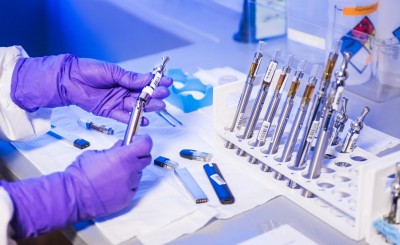Health & Medicine
Scientists Uncover Machinery Regulating Traffic in Cells: 2013 Nobel Prize in Physiology or Medicine
Catherine Griffin
First Posted: Oct 07, 2013 01:22 PM EDT
First Posted: Oct 07, 2013 01:22 PM EDT
Transportation in our cells is important to understand. It allows scientists to develop better treatments that could potentially target diseases in the future. Now, scientists have discovered the machinery regulating vesicle traffic, a major transport system in our cells.
Each cell is a factory that produces and exports molecules. For example, insulin is manufactured and released into the blood and chemical signals called neurotransmitters are sent from one nerve cell to another. These molecules are transported around the cell in small packages called vesicles. Now, researchers have discovered the molecular principles that determine how this cargo is delivered to the right place at the right time in the cell.
There are three main factors that are involved in this transport. A set of genes is involved for vesicle traffic, protein machinery allows vesicles to fuse with their targets to permit transfer of cargo and signals instruct vesicles to release their cargo with precision. Without these three mechanisms, the transport wouldn't occur.
Actually learning about this process wasn't easy, though. It took years of research for the three scientists involved. Yet the discoveries have had a major impact in understanding how cargo is delivered with precision both inside and outside the cell. Vesicle transport and fusion operate, with the same general principles, in organisms that range from yeast to humans. In fact, the system is critical for a variety of physiological processes in which vesicle fusion must be controlled. This ranges in processes that include everything from signaling in the brain to the release of hormones and immune cytokines.
In recognition of these particular findings, the Nobel Assembly at Karolinska Institut actually awarded the 2013 Nobel Prize in Physiology or Medicine to the three scientists involved: James E. Rothman, Randy W. Schekman and Thomas C. Sudhof. Their findings have major implications both for future research in medicine and in scientific discoveries.
See Now: NASA's Juno Spacecraft's Rendezvous With Jupiter's Mammoth Cyclone




